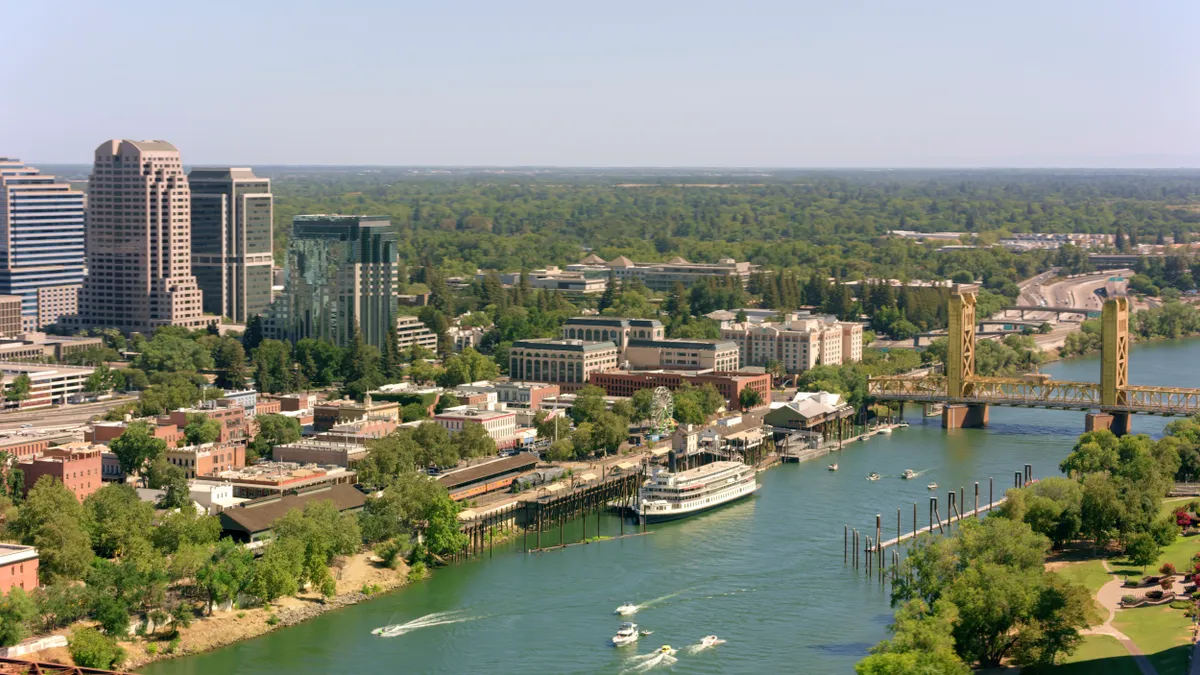Editor's Note: The following is a guest post from Mark Groden, co-founder and CEO of Skyryse.
Transportation infrastructure in the United States hasn’t evolved in more than 100 years. While roads and railway networks have certainly expanded over the past century, the underlying architecture is essentially the same. From coast to coast, it’s asphalt roads and steel train tracks for most Americans going about their day-to-day lives.
For a growing number of people living in the U.S. today, it’s getting harder to commute to work, travel for leisure or even visit nearby friends and family. The current transportation infrastructure simply can’t keep up with demand. According to the Department of Transportation’s 2016 annual report, the amount of road congestion and associated costs have been rising since 2000. Today, U.S. drivers spend over 6.9 billion hours in traffic annually, amounting to a progressive tax on our personal well-being and economic productivity.
What’s needed is a fundamental shift in transportation: truly disruptive innovation that can deliver step-change improvements over current models and introduce entirely new ways to get around. That’s the promise of autonomous flight — or air taxis, as this fast-emerging technology is more commonly known — and it will be here sooner than you think.
Here are three ways air taxis will change the way we live and work in the coming years.
Choosing where to live
Increasingly, people are moving away from cities in favor of the suburbs, where housing is more affordable and roadways are less congested. In fact, in the highest-density urban areas, population growth has been steadily on the decline since 2010.
With the emergence of air taxis, that’s set to continue — and expand. Much in the way new roadways in the 1950s gave rise to the suburbs by creating an easy and efficient way to travel in and out of cities, self-flying aircraft will kick-off another major wave of urban sprawl in the coming decades. This time, however, the dispersion will expand much farther since aircraft can traverse far greater distances in far less time than traditional modes of transportation. From a density standpoint, we’ll see more people living in locations even farther from cities geographically, but closer to them with respect to time.
Reframing the daily commute
Most workers in the U.S. today commute 25 minutes each way on average, and most often by car. This not only limits us geographically but also has lasting impacts on our mental and physical health. Researchers have been studying the effects of driving on human health for years. Time and time again, the findings paint a bleak picture: commuting long distances and contending with traffic congestion makes people lonely, increases the risk of heart attack and contributes to a long list of other health issues.
Air taxis stand to completely reframe the commuter experience. While it’s still too early for a body of research to exist, there’s reason to believe it can have the total opposite effects on health. For one, commute times become much shorter since aircrafts operate faster than cars (100 mph on average) and avoid all traffic on congested roadways. This means less time sitting and waiting, and less stress and frustration along the way. What’s more, it frees up valuable time that can be spent doing more enjoyable and rewarding activities, such as spending time with family and friends, or exercising.
And then there’s the positive effects of perspective. That is, the experience and sensation of seeing the world from above. Having spent hundreds of hours in an air, I can attest to the power of what’s known as the “overview effect,” even at 10,000 ft. In short, the overview effect is the profound sense of awe and appreciation for the fragility of the earth and the interconnectivity of all life on the planet.
Changing how we meet with business connections
The rise of collaboration tools in recent years was supposed to bring people closer together. So why then do so many people today feel isolated at work? The reality is that there is no replacement for meeting in person and having interactions face-to-face. Video conferences with customers and colleagues just aren’t the same as the real thing.
But traveling around cities is getting harder, and between them harder still. This leaves companies to grapple with a difficult question: face time is valuable, but how much travel time is it actually worth?
Flying changes the equation. For example, driving between San Francisco and San Jose during the workday can take upwards of 60-90+ minutes by car, compared to 15-20 minutes in the air. As air taxis become a widespread mode of transport, the choice between driving and flying for business disappears. Just as you would never road trip across the country for a business meeting, it will soon be the same for traveling between nearby cities. Time is money – and when an air taxi trip costs the same as an Uber ride, there’s no question which one you will take.


















